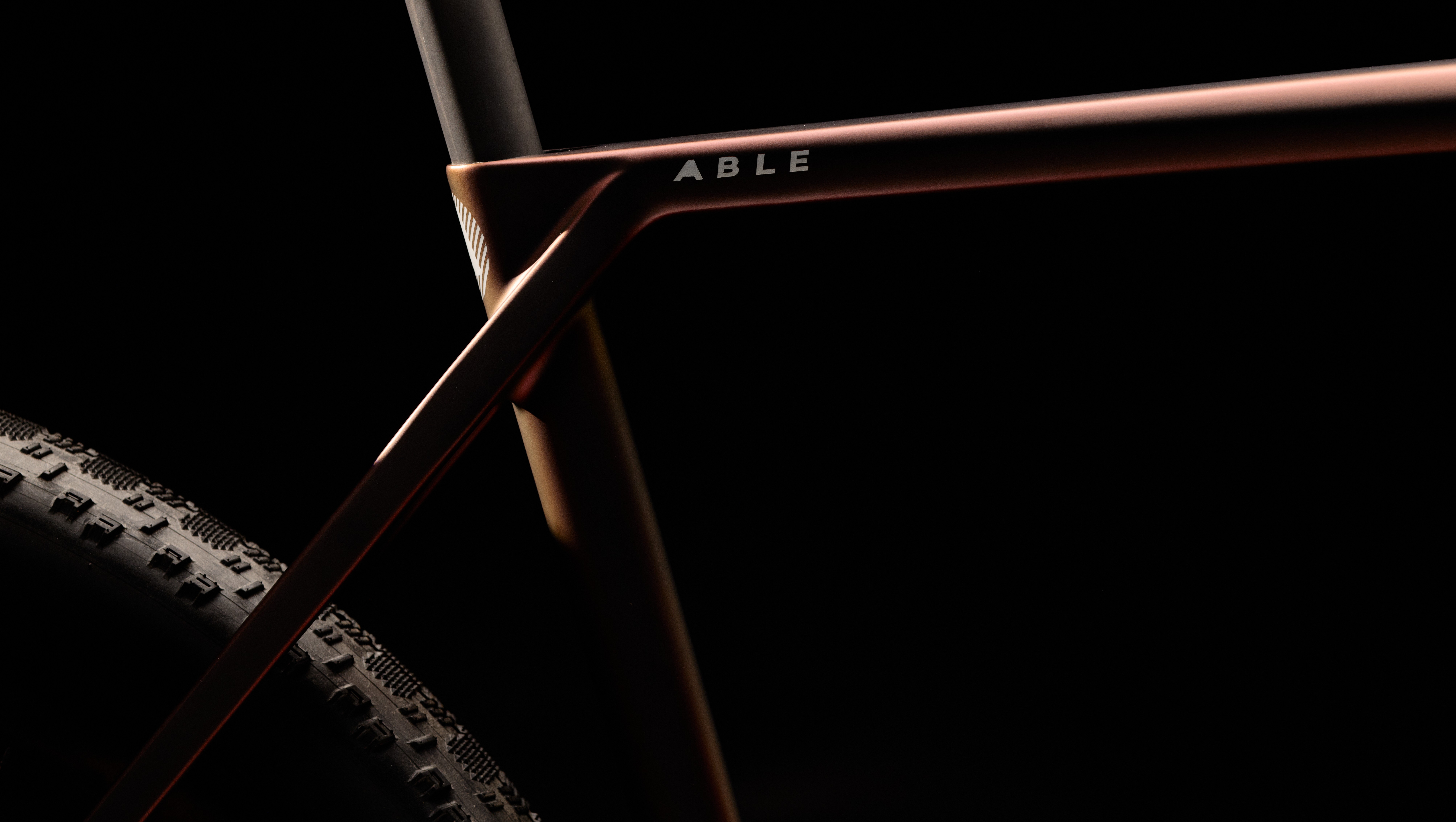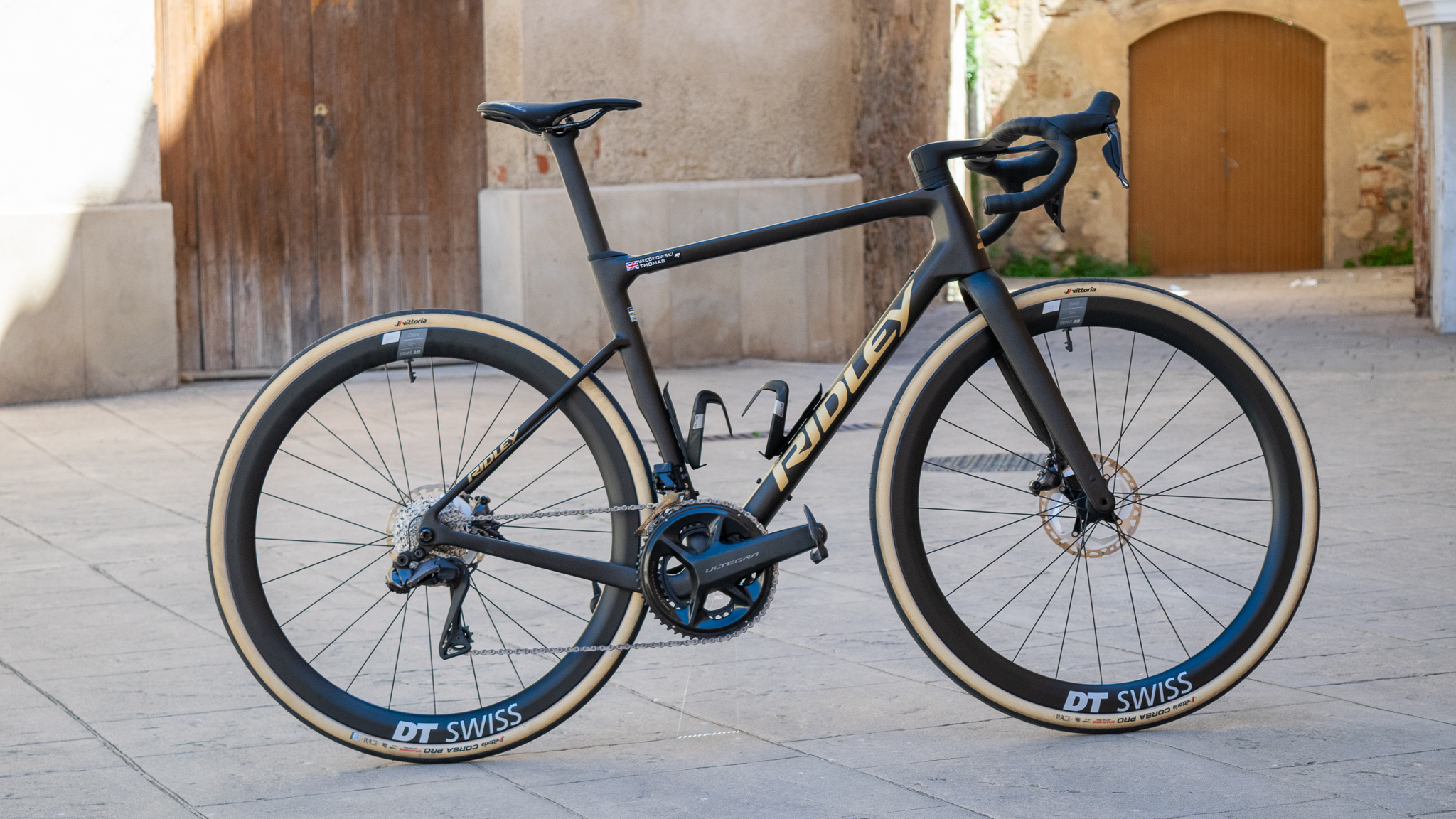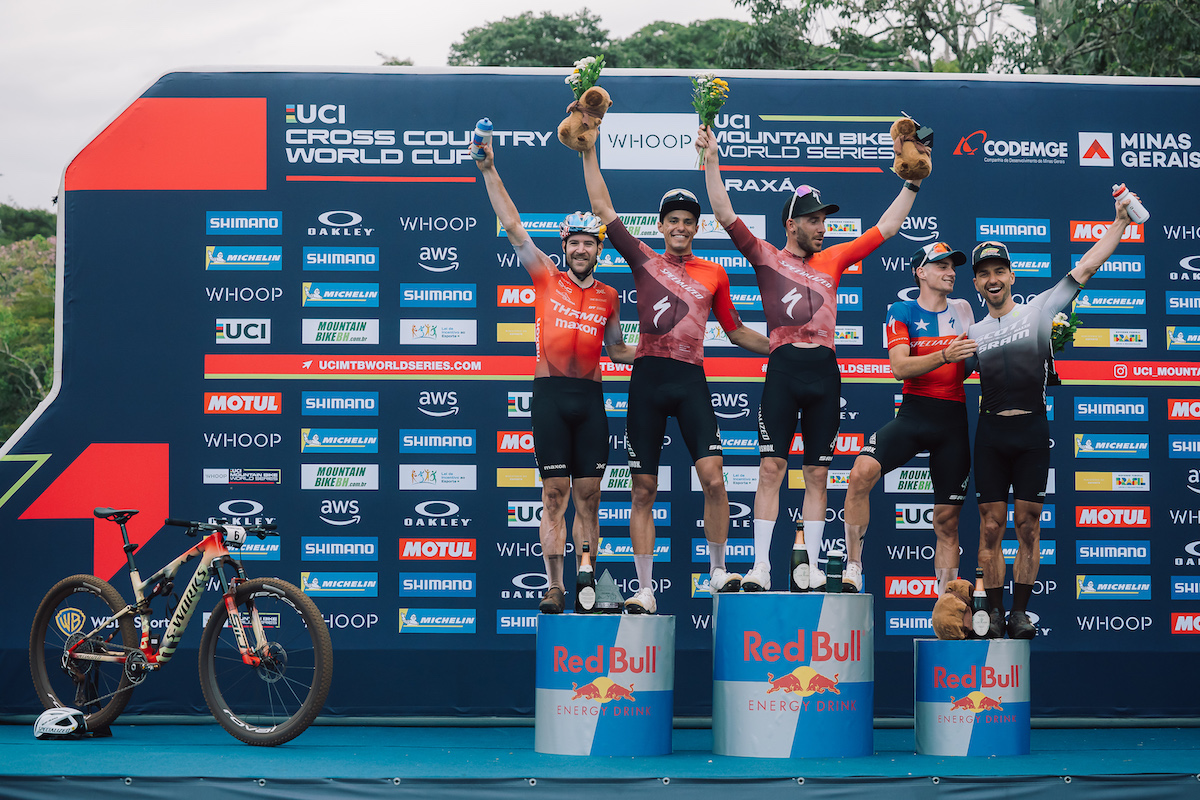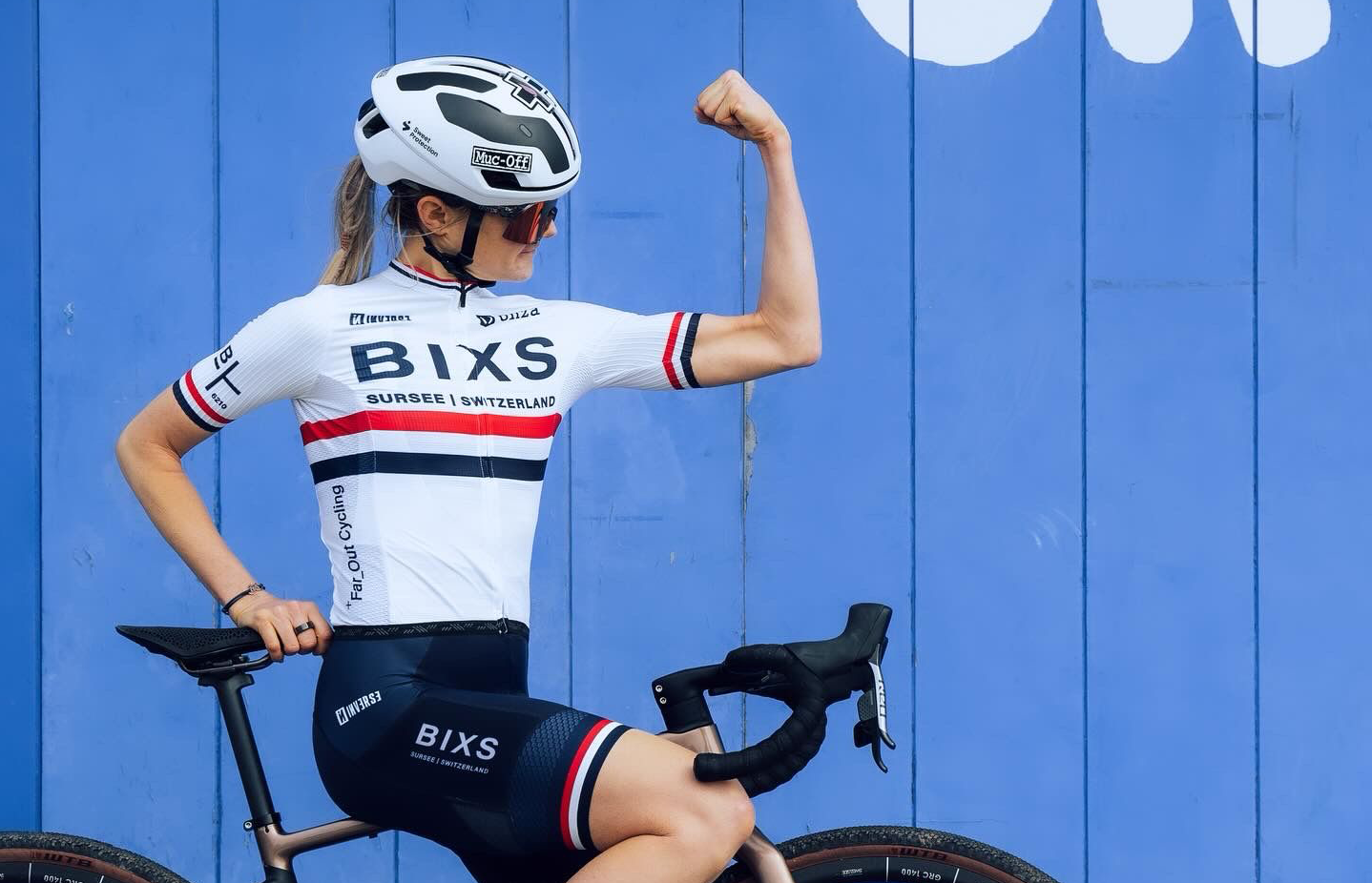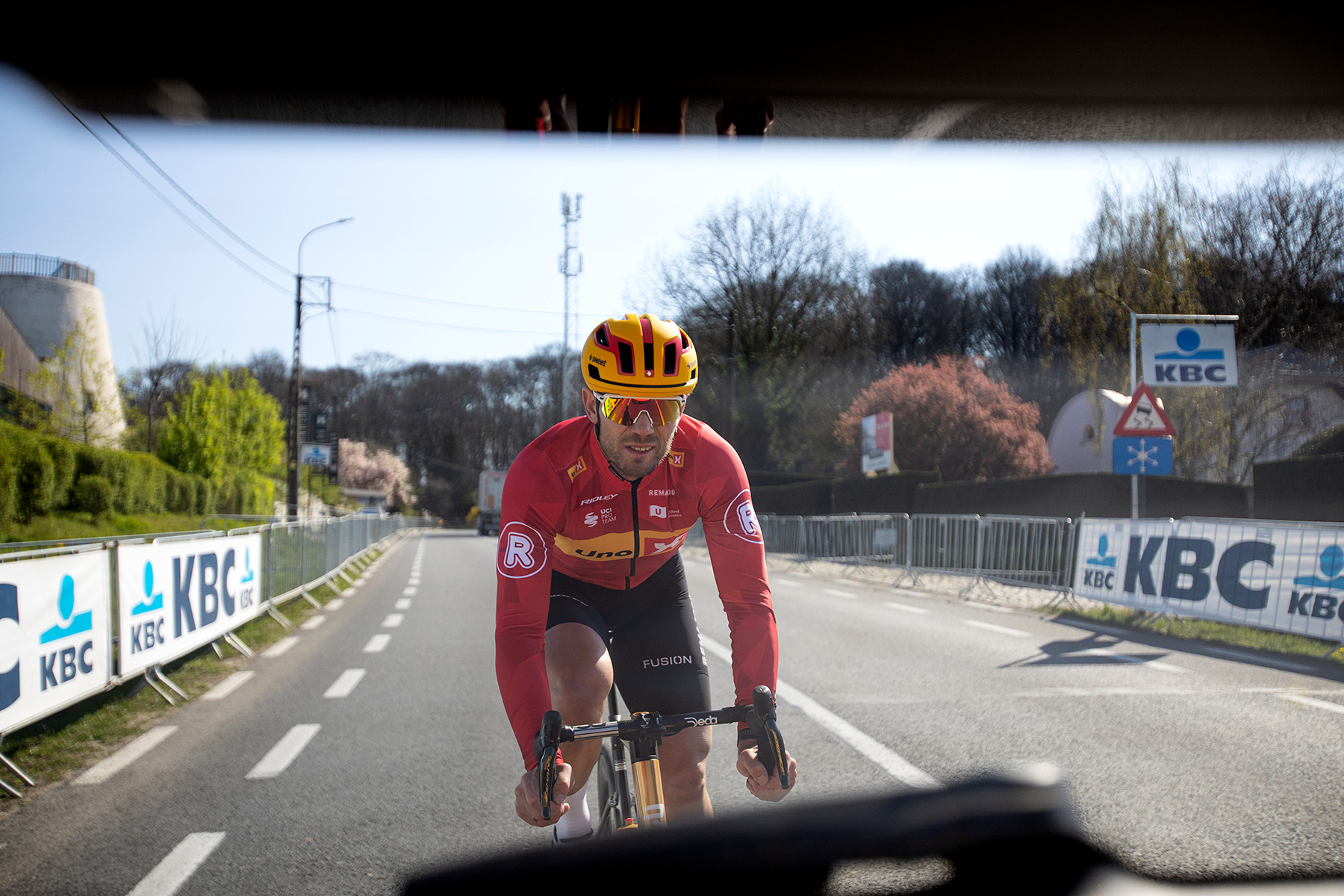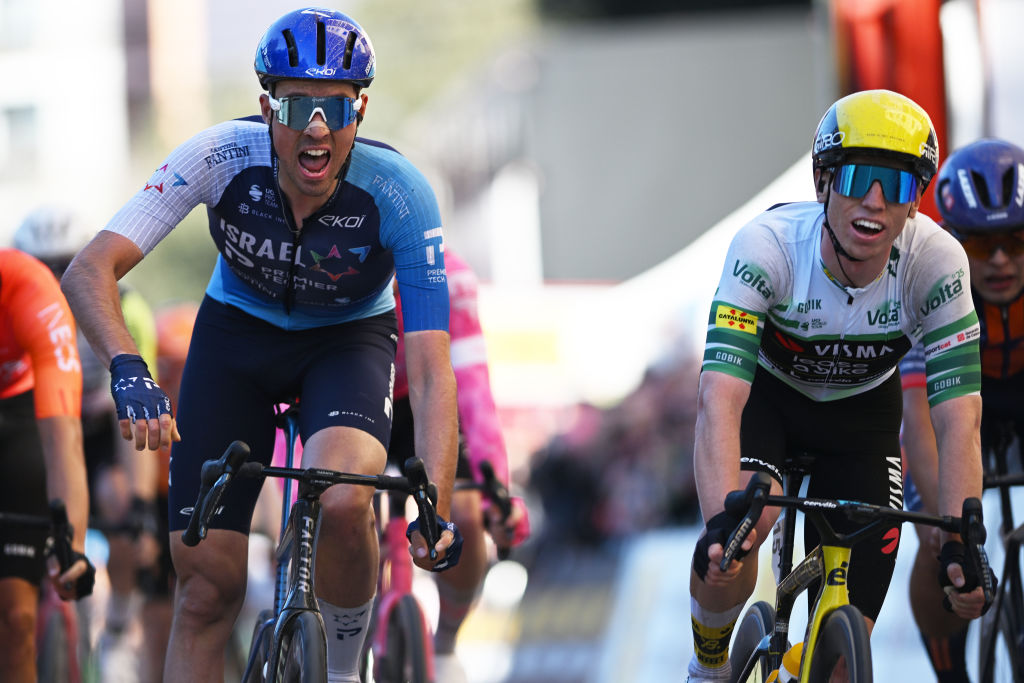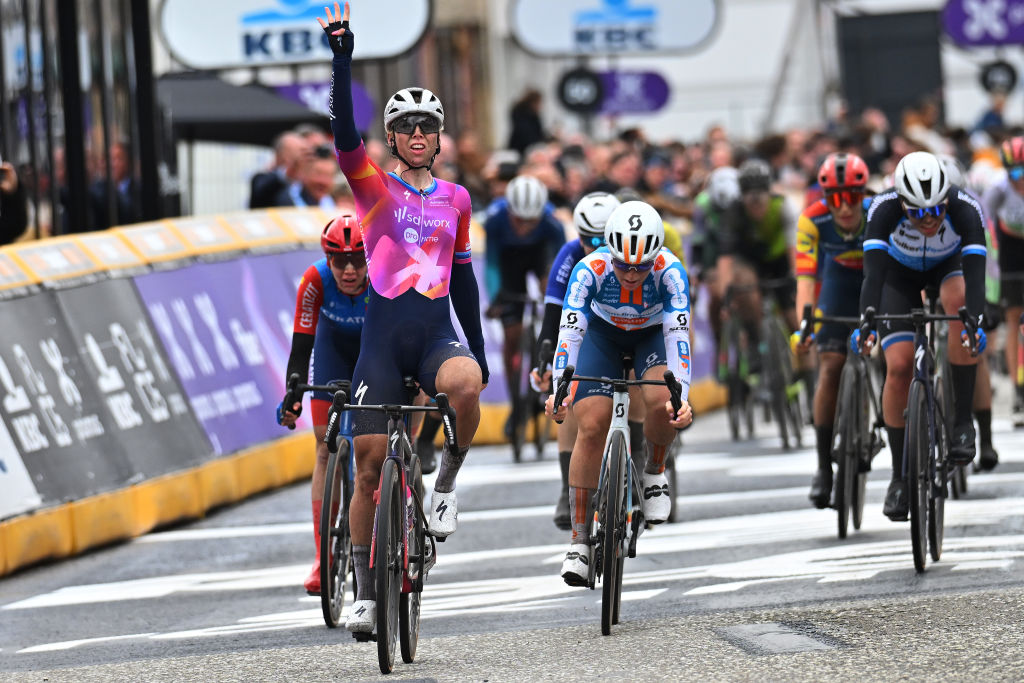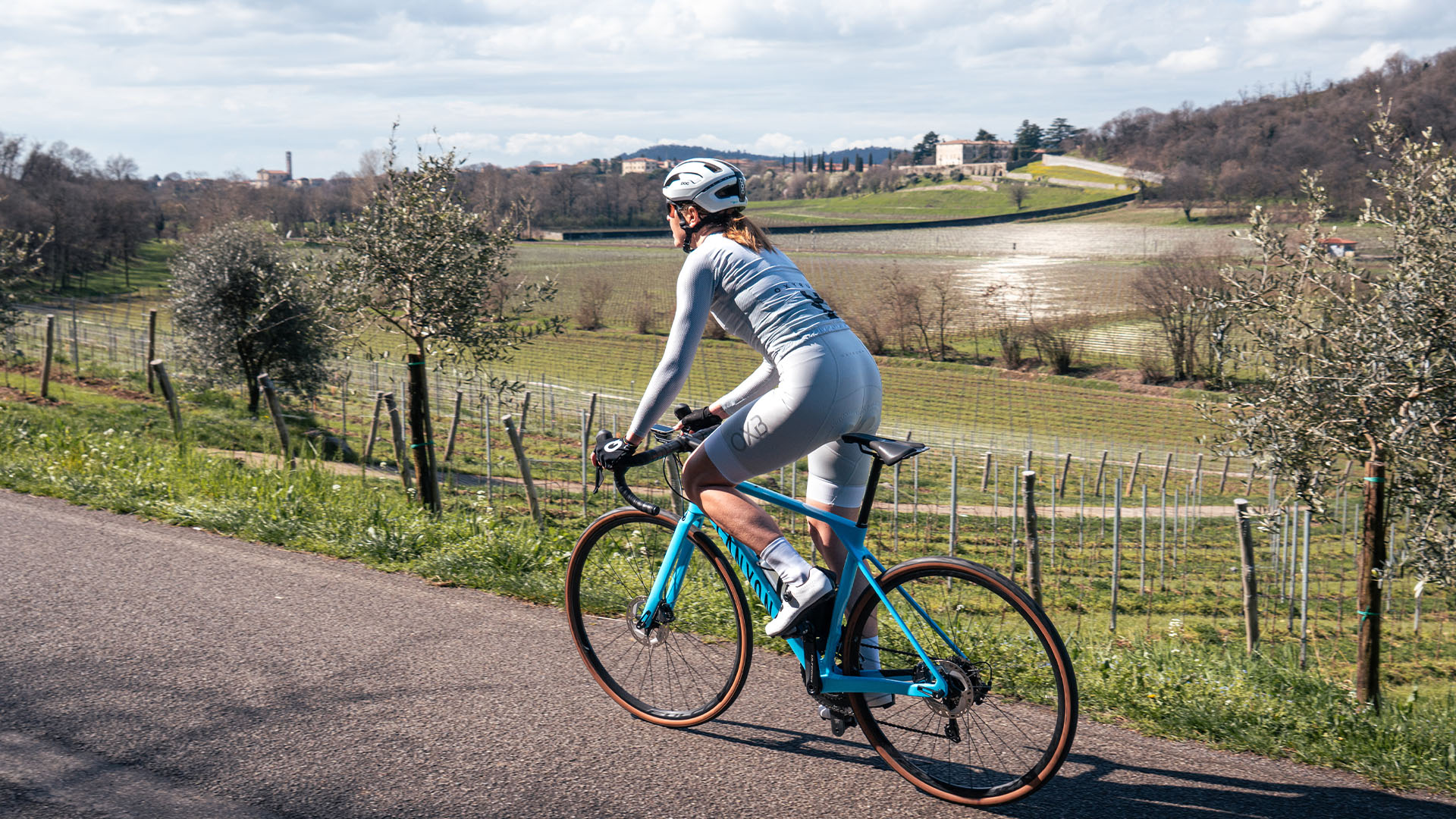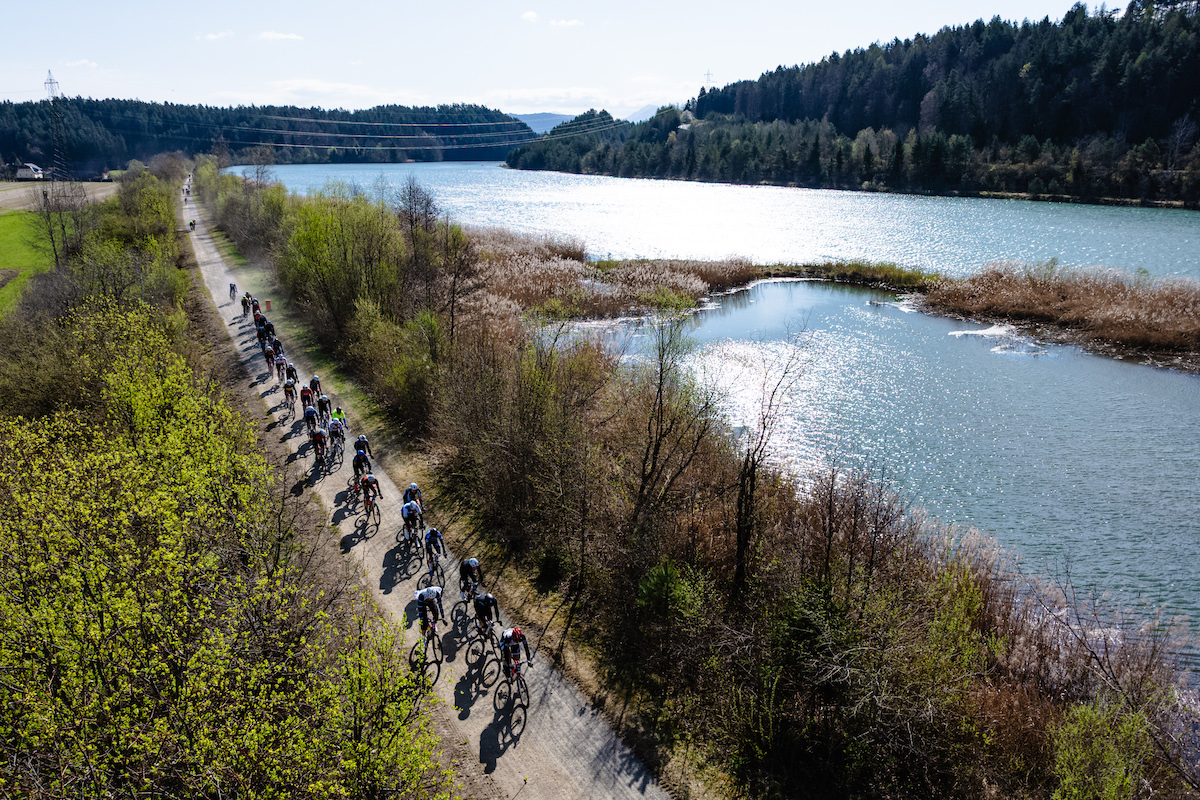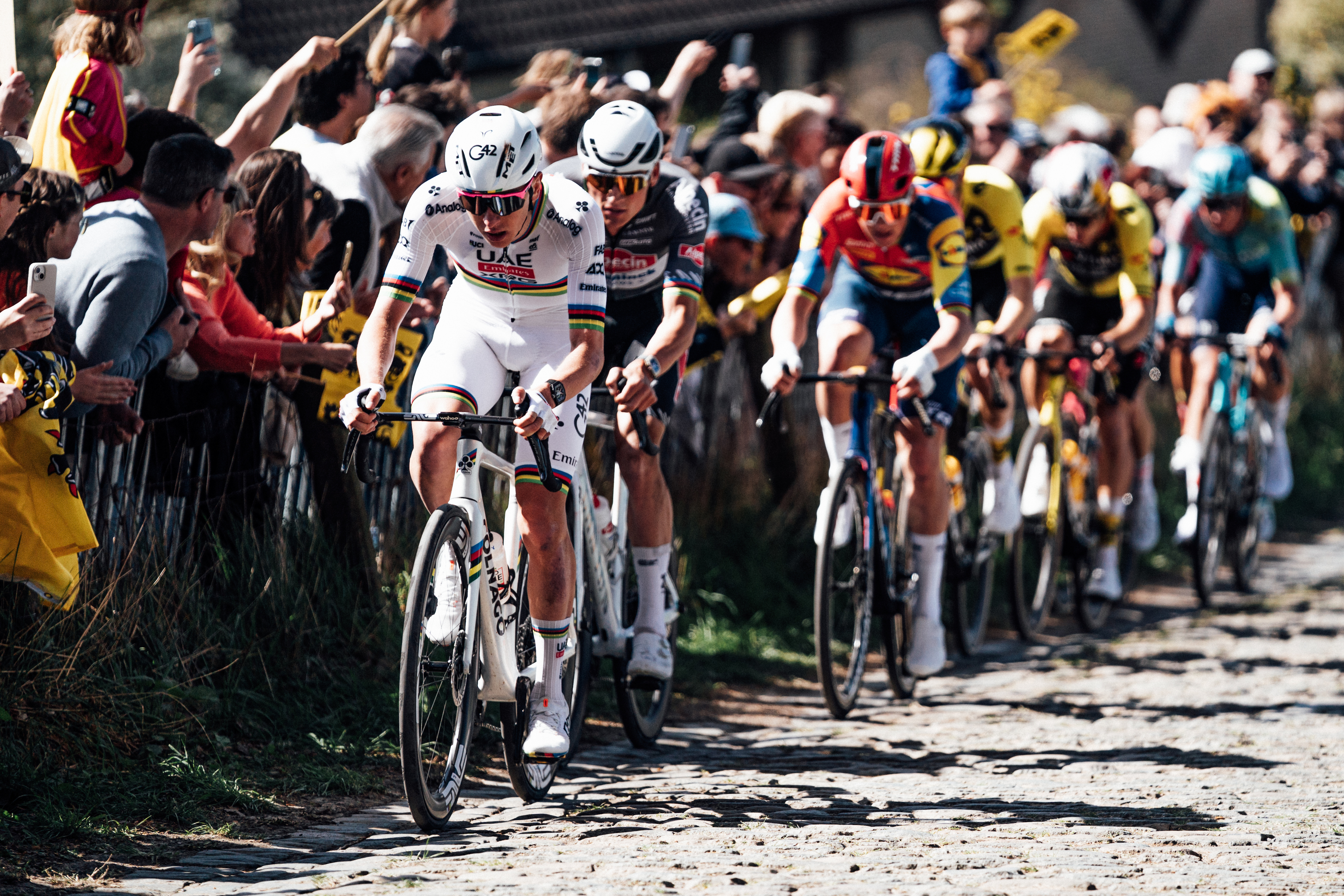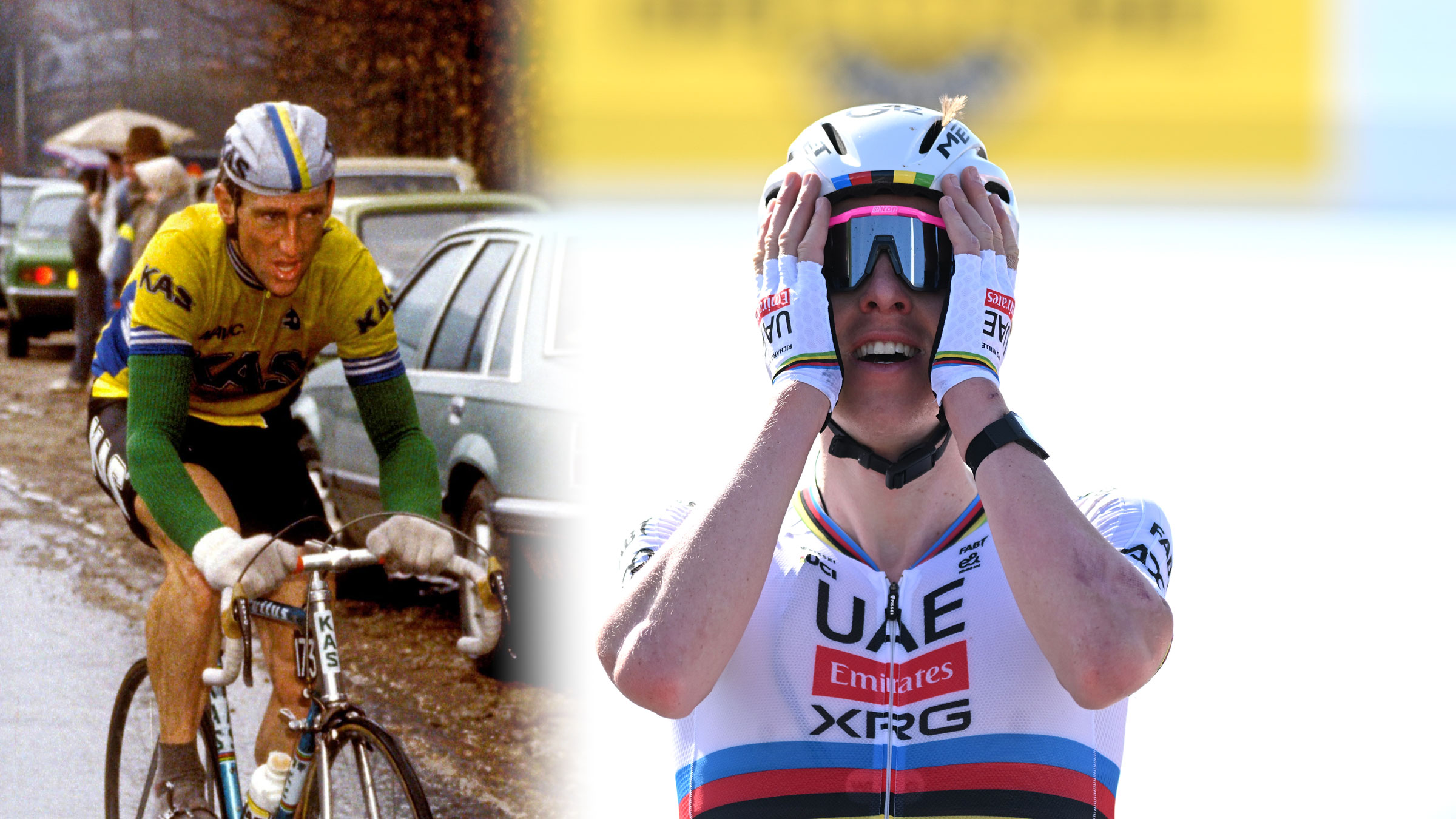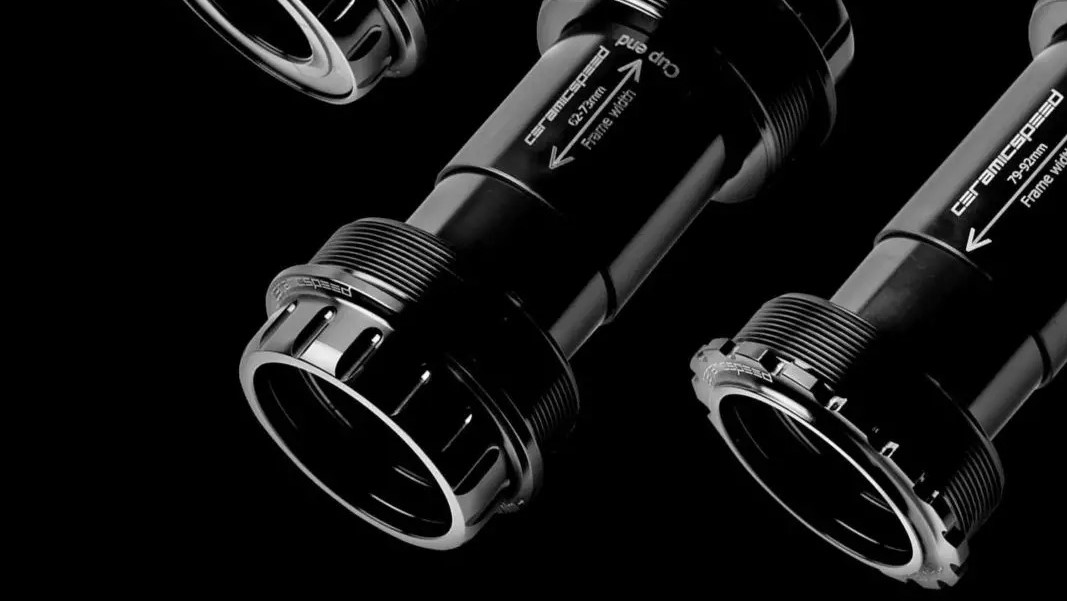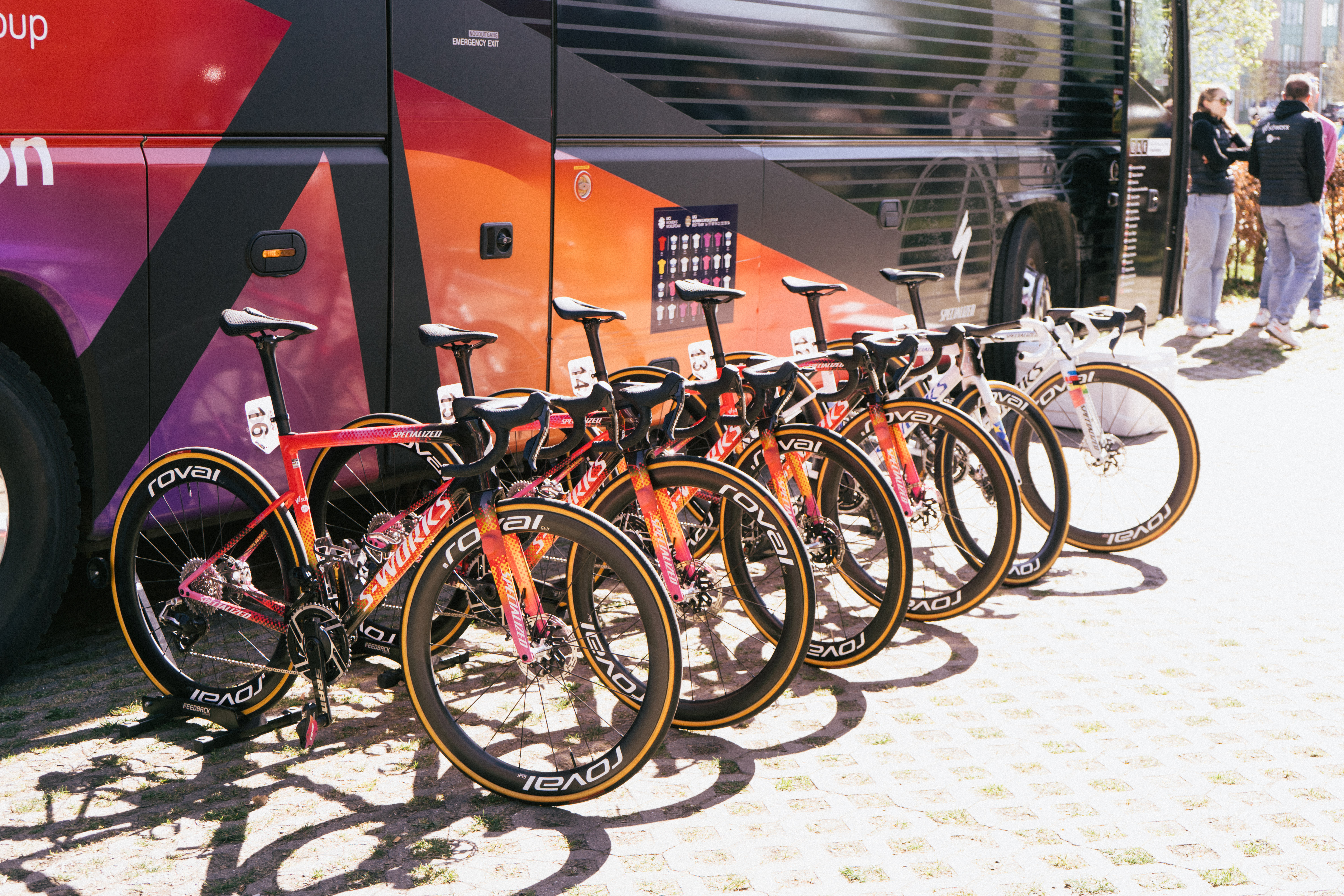More bikes of the Tour de France: what the pros are riding this year
BMC, Merckx, Kuota and Focus









































BMC's new Impec hits the global stage
BMC debuted its new Impec flagship at the Tour de France under Cadel Evans and George Hincapie and like most frames to come out of the Swiss company, it's an undeniably unique looking machine.
Interestingly, the Impec is about 200g heavier than the current TeamMachine SLR01 – putting the bare frame at around 1,130g – though its stout construction suggests that extra mass also brings also additional stiffness. Either way, modern build kits still easily let the team stay near the UCI-mandated 6.8kg minimum bike weight and the new construction technology used for the Impec suggests that further developments are forthcoming.
The Impec's carbon tubes are woven on-site in BMC's new Swiss facility by industrial robots – a process that BMC claims yields more consistent end results than tubes laid up by hand and a far lower rejection rate. Joining the tubes together are injection-molded short-fiber composite 'shell nodes', which are essentially carbon lugs that are formed in two halves to allow for more precise glue application and tube placement.
Additional features include molded composite dropouts, a tapered front end, a BB30 bottom bracket shell, and BMC's preferred internal cable routing.
BMC team mechanics build up each rider's bike with a full Campagnolo Record group, Easton bars and stems, Selle Italia saddles, Speedplay Zero pedals, Elite bottle cages, and CycleOps Cervo and Joule computers. Easton also supplies a variety of carbon tubular wheels, all wrapped with Continental tires.
Breaking away on the Quick Step Eddy Merckx EMX-5
Get The Leadout Newsletter
The latest race content, interviews, features, reviews and expert buying guides, direct to your inbox!
Sylvain Chavanel's wins in Tour de France stages 2 and 7 both came on the Eddy Merckx EMX-5 – the Belgian company's flagship road racer designed in conjunction with Pinarello and built with Toray 46HM carbon fiber.
On the surface, it's a fairly standard rig featuring large-diameter tubing, semi-aero shapes, a tapered front end, a well bolstered bottom bracket area, and curved stays that are said to yield a more comfortable ride. Merckx's views on frame geometry, though, are perhaps a bit more telling as to the bike's fit and performance, though.
Head tube angles are notably slack – ranging from just 69.7 up to 72.5 degrees – and head tube lengths are fairly generous for a top-end race bike. Bottom brackets are also positioned quite low at up to 71mm of drop. In total, it adds up to a predictable-handling and comfortable rig that faithfully adheres to Merckx's philosophy on stage race bikes: while light enough to climb, they have to be able to descend properly, too; and there's little sense in suffering through to the end of a stage if you're too fatigued from road vibration to contest the finish.
Quick Step dresses up its EMX-5 framesets with Campagnolo Record groups, Look KéO pedals, Prologo saddles, Tacx bottle cages, BBB computers, and Deda bars, stems and seatposts. Rolling duties are handled by Continental tubulars glued on to FFWD carbon tubular wheels – including a brand-new 1,350g 60mm-deep model with special brake surfaces that are claimed to offer wet weather performance comparable to alloy rims.
Ag2r-La Mondiale takes mountaintop stage win with Kuota's KOM
Track racer Christophe Riblon pulled off a coup of sorts by winning stage 14's mountaintop finish at Ax-3 Domaines – aboard the suitably named Kuota KOM, no less.
The KOM is Kuota's lightest frame with a claimed weight of just 900g and we can say from firsthand experience that it's also one of the quicker handling machines in the peloton with its stubby 402mm chain stays and ultra-short wheelbase.
Kuota has also infused its flagship model with giant tube sizes, a BB30 bottom bracket, and a tapered front end for rigidity – all resulting in a lot of surface area. So what's the catch?
Tube walls are paper-thin for one, which might lead some to believe that the KOM isn't terribly durable. However, AG2R-La Mondiale also uses the same frames for Paris-Roubaix so apparently they're sufficiently tough.
Bolted on to each team KOM frame is a complete SRAM Red group – including the standard PowerDome cassette and titanium-caged front derailleur instead of the stamped PG-1070 cassette and optional steel cages of most SRAM-sponsored teams – along with Reynolds carbon tubular wheels and 'Michelin' tubulars (though Michelin doesn't currently offer tubulars to consumers).
Finishing kit includes Deda bars and stems, Selle San Marco saddles, Time iClic pedals, Elite bottle cages, Sigma computers, and Gore Ride-On cable systems.
Focus Izalcos for Team Milram
Team Milram has stuck to its German roots with Focus's top-end Izalco Team. Claimed weight for the carbon frame is respectably light at just under 1kg but with complete team bikes still so easily falling below the UCI-mandated 6.8kg minimum, Focus has wisely decided to concentrate on a more complete picture.
Good frame stiffness comes courtesy of the higher-modulus carbon fiber content, tapered 1 1/8"-to-1 1/4" front end, BB30 bottom bracket, asymmetrical seat tube, and modestly oversized tubing throughout. However, rider comfort is still clearly a high priority given the spindly seat stays and relatively small-diameter 27.2mm seatpost.
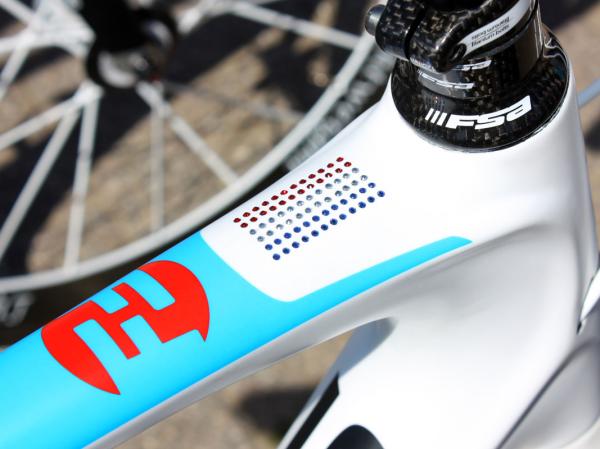
Team Milram's Niki Terpstra gets a bit of customization on his Focus Izalco Team.
Pro bikes lead a tough life so durability and ease of maintenance play roles, too. Focus has reinforced the top tube where handlebars would normally hit during a crash, full-length derailleur housings are guided end-to-end in the frame for easy line changes and consistent foul-weather shift performance, and in the case of poor road conditions there's even clearance at either end for wider 25mm tires.
Team bikes are dressed in SRAM Red groups – with steel-caged front derailleurs – ultralight CarbonSports Lightweight wheels mounted with Continental tires, fi'zi:k saddles, Speedplay Zero pedals, Garmin Edge 500 computers, Tacx Tao Carbon cages, and FSA bars, stems, headsets and seatposts.
